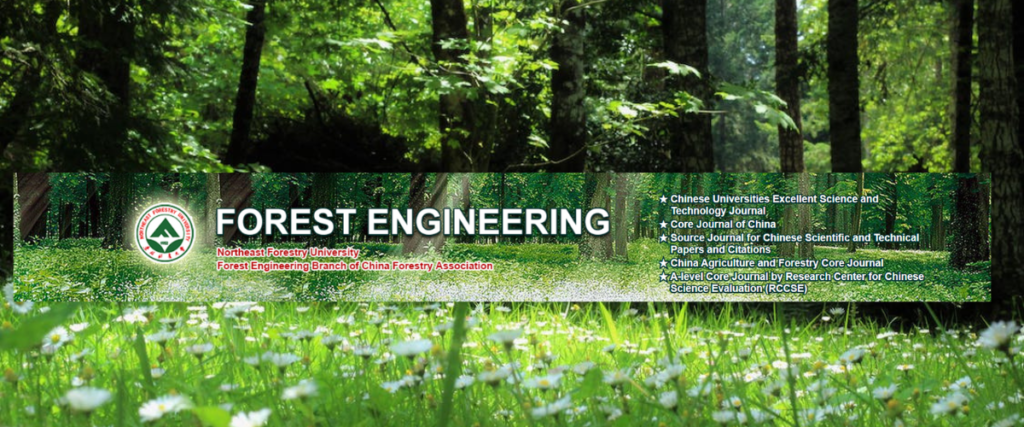Forest Engineering
ISSN 1006-8023
The Forest Engineering Journal is a peer reviewed journal dedicated to the dissemination of scientific research and advancements in the field of forest engineering. It serves as a platform for researchers, academics, professionals, and practitioners to share their innovative ideas, findings, and experiences related to forest engineering and related disciplines.

FOREST ENGINEERING
Supervised by:
Ministry of Education of the People’s Republic of China
Sponsored by: Northeast Forestry University
Chief Editor: Dong Xibin
Executive Deputy Editor: Liu Meishuang
Edited and Published by:
Editorial Department of Forest Engineering
Address:
Northeast Forestry University, No.26 Hexing Road, Harbin
Post Code: 150140
Printed by:
Harbin Hanxiang Printing Co., Ltd
General Distributor: Harbin Post Office
For Subscription, Contact:
Post Offices throughout China
Mailing Code :14-170
Unit Price: 12RMB
Telephone: 0451-821680731
E-mail: editor-in-chief@forestengineering-cn.com
CN: 23-1388/S
ISSN: 1006-8023
Scope of Forest Engineering
The Forest Engineering Journal is a scholarly publication dedicated to advancing knowledge and promoting research in the field of forest engineering. It aims to serve as a platform for the exchange of scientific information, innovative ideas, and practical experiences related to the sustainable management and utilization of forest resources. The journal covers a wide range of topics encompassing both technical and interdisciplinary aspects of forest engineering.
The scope of the Forest Engineering Journal includes, but is not limited to, the following areas:
- Forest Harvesting and Logging: Techniques, equipment, and methodologies for efficient and sustainable timber extraction, including cut-to-length and full-tree systems, cable yarding, and ground-based operations.
- Forest Road Construction and Maintenance: Design, construction, and maintenance of forest roads, including considerations for terrain, environmental impacts, erosion control, and traffic management.
- Forest Biomass and Energy: Utilization of forest biomass for renewable energy production, biofuels, and bioproducts, including the development of harvesting and processing systems optimized for biomass extraction.
- Forest Transportation and Logistics: Optimization of transportation systems for forest products, including planning, scheduling, and routing of vehicles, as well as innovations in intermodal transportation and supply chain management.
- Forest Watershed Management: Integration of forest engineering practices with watershed management, focusing on water quality protection, erosion control, stream habitat enhancement, and hydrological modeling.
- Forest Planning and Decision Support Systems: Application of advanced technologies, such as Geographic Information Systems (GIS), remote sensing, and computer modeling, for forest planning, decision-making, and optimization of operations.
- Wildlife Habitat and Biodiversity Conservation: Strategies and practices to enhance wildlife habitat, promote biodiversity conservation, and minimize the ecological impacts of forest engineering activities.
- Business and Economic Aspects: Economic analysis, cost-benefit assessments, and business models related to forest engineering operations, including timber pricing, investment analysis, and forest management planning from a financial perspective.
- Environmental Sustainability and Climate Change: Research on the environmental impacts of forest engineering practices, adaptation and mitigation strategies to address climate change, and integration of sustainability principles into forest management.
- Social and Human Dimensions: Exploration of social, cultural, and human aspects of forest engineering, including stakeholder engagement, community-based forestry, indigenous knowledge, and the socio-economic implications of forest engineering activities.
The Forest Engineering Journal encourages original research articles, review papers, technical notes, and case studies that contribute to the advancement of forest engineering knowledge, technology, and practices. It welcomes contributions from researchers, practitioners, and professionals working in forestry, engineering, natural resources management, and related fields.
